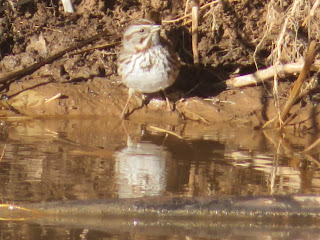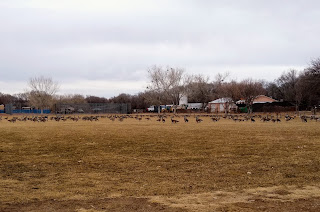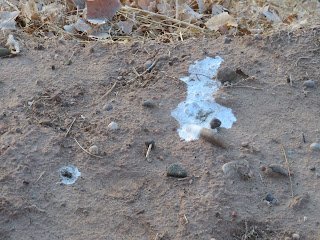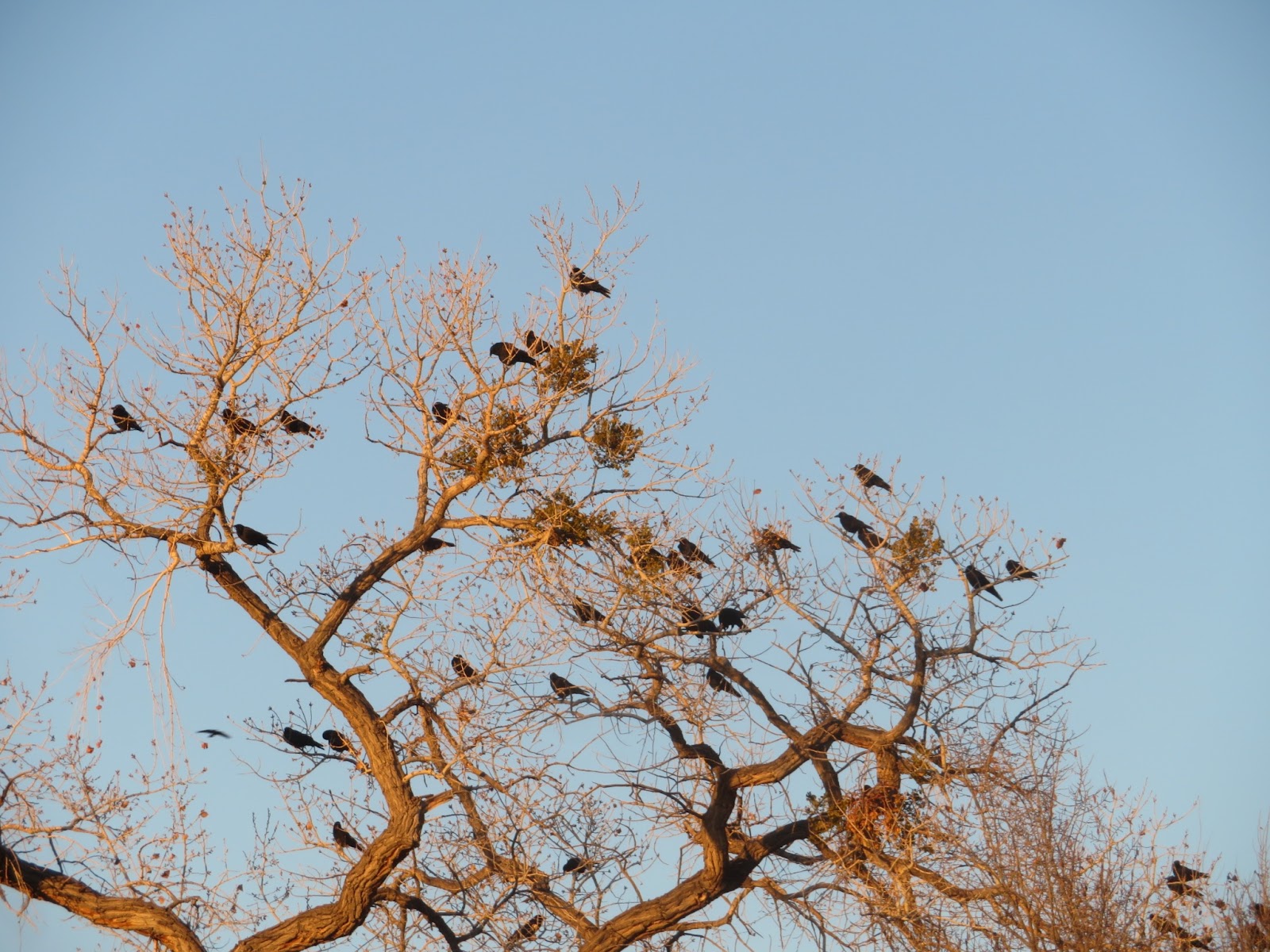
In the bosque of Corrales the tree cover is very dense, with a canopy layer of cottonwoods and elms, a midstory of New Mexico and Russian Olive, and a ground cover of Russian thistle and tall grasses. The irrigation canals give small birds a lot of water's edge with cover so they can stay well protected. Easy access to water is a common need for most birds in North America. Human agriculture provides a patchwork of open spaces for a wide variety of different habitats for those birds that are generalists, like pigeons and sparrows.
Most of the small birds that thrive around humans are adapted to a wide variety of food sources. Many, like this sparrow, can hunt small insects and also eat seeds.
Other birds feed on those birds. This small raptor hunts mostly voles that thrive in tunnels along the ditch edges, but it seems to like a wide variety of prey, from birds to grasshoppers. It is an American Kestrel.
Canada geese come to Corrales specifically for the closely mowed fields used by farmers and team sports. Here, the soccer fields in the center of Corrales village are being used by Canada geese who are getting ready to return north for nesting. There are other wild geese that are less tolerant of human presence, like snow geese, and they stay further south in the refuges like Valle del Oro, Bosque del Apache, and other wildfowl areas
This is a new nest made by a small passerine. Nesting season is not until April, officially, but not all birds got that memo. This actually a pretty big issue among those who care about the bosque, and often sets the tree managers against wildlife enthusiasts. Other wildland recreational users such as cyclists, equestrians and dog-walkers seem to look on with amusement. The weird kind of pretzel mind games this can lead to are shown in this link about California environmental law.
The winter is the best time to care for trees, especially pruning. There is a minimum of photosynthesis, the sap is not rising in the trees and most insects, fungi and bacteria will not take advantage of easy access to the vulnerable heartwood. For the arborist, when looking at a tree without the leaves, it is easier to see the issues with a tree's structure. It helps that there are also fewer bird nests affected by the activities of chainsaws, falling limbs, and heavy equipment.
The ice on these two trees on a snowy morning shows where the water vapor is escaping. The precesne of ice shows that is these two trees, water is being transpired, and means the trees are growing, even in the middle of frozen winter.
But push a tree sideways....and it grows...upwards. As a former trails maintenance volunteer in England, I have seen this growth pattern before.
It's a hedgerow.
A hedgerow is an environment used in the eastern states of the US and Europe to mark boundaries. In Derbyshire, where I went to school, they used double hedges as boundary markers instead of barbed wire. But hedgerows are mostly a way of working with the environment and connecting with a past that goes back generations into pre-history. They are far more than a simple fence.
It isn't hard to make a hedgerow ecosystem, but the art is not something that is recognizable in the Southwestern US. No one is going to put the work into building hedges when in the SW the culture and industry practice is to quickly put up three strands of barbed wire and move on.
Currently, wood is piled along the bottom of the levees for removal at some future time. The costs in terms of energy, time and/or money is enormous. And there is not much money available for this kind of haulage work. Even if there was, there would be disagreements almost immediately over the scope, goals, and purpose of the removals. The work is done as an afterthought, when other priorities have been completed.
In many area where the bosque meets the fields or gardens of people, there is a thick border of young elm trees. Often they grow too close together and sort of serve as an adhoc fence. People have a proven history of applying the right conservation measures at the wrong times, but almost ever day I look at these nascent wood lots and wonder what could be. In modern times, carbon offsets are purchased by computer server companies. The theory is that growing trees sequester carbon. . The whole market relies on growing trees, and a shaky financial system (valued at $1 billion dollars in 2021, but with unlimited growth) that sounds a lot like a cryptocurrency system. I always wonder, who is it that actually owns all these trees, whose future we fight over?





























































